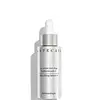What's inside
What's inside
 Key Ingredients
Key Ingredients

 Benefits
Benefits

 Concerns
Concerns

No concerns
 Ingredients Side-by-side
Ingredients Side-by-side

Water
Skin ConditioningBetaine
HumectantLactobacillus/Portulaca Oleracea Ferment Extract
AntioxidantHydroxypropyl Methylcellulose
Emulsion StabilisingPropanediol
SolventGlycerin
HumectantPullulan
Phenoxyethanol
PreservativeCarbomer
Emulsion StabilisingEthylhexylglycerin
Skin ConditioningPorphyridium Cruentum Extract
Skin ConditioningPotassium Sorbate
PreservativeSodium Hyaluronate
HumectantLeuconostoc/Radish Root Ferment Filtrate
AntimicrobialBiosaccharide Gum-1
HumectantBaicalin
AntioxidantSodium Hydroxide
BufferingHexapeptide-47
Skin ConditioningWater, Betaine, Lactobacillus/Portulaca Oleracea Ferment Extract, Hydroxypropyl Methylcellulose, Propanediol, Glycerin, Pullulan, Phenoxyethanol, Carbomer, Ethylhexylglycerin, Porphyridium Cruentum Extract, Potassium Sorbate, Sodium Hyaluronate, Leuconostoc/Radish Root Ferment Filtrate, Biosaccharide Gum-1, Baicalin, Sodium Hydroxide, Hexapeptide-47
Rosa Damascena Flower Water
MaskingWater
Skin ConditioningGlycerin
HumectantButylene Glycol
HumectantMethyl Gluceth-20
HumectantImperata Cylindrica Root Extract
Skin ConditioningDiglycerin
HumectantHydroxypropyl Methylcellulose
Emulsion StabilisingPhenoxyethanol
PreservativePullulan
Xanthan Gum
EmulsifyingPlantago Lanceolata Leaf Extract
AntimicrobialEthylhexylglycerin
Skin ConditioningPPG-26-Buteth-26
Skin ConditioningPEG-40 Hydrogenated Castor Oil
EmulsifyingAcrylates/C10-30 Alkyl Acrylate Crosspolymer
Emulsion StabilisingPentylene Glycol
Skin ConditioningPorphyridium Cruentum Extract
Skin ConditioningCaprylyl Glycol
EmollientMaltodextrin
AbsorbentSodium Hydroxide
BufferingRosa Damascena Flower Oil
MaskingPelargonium Graveolens Oil
MaskingCitric Acid
BufferingTheobroma Cacao Seed Extract
AntioxidantPsilanthus Bengalensis Leaf Cell Culture Extract
Skin ConditioningSodium Hyaluronate
HumectantCarbomer
Emulsion StabilisingAcetyl Hexapeptide-8
HumectantCamellia Sinensis Leaf Extract
AntimicrobialRubus Idaeus Leaf Cell Culture
Skin ConditioningNicotiana Sylvestris Leaf Cell Culture
Skin ConditioningAcetyl Hexapeptide-38
Skin ConditioningN-Prolyl Palmitoyl Tripeptide-56 Acetate
Skin ConditioningCitronellol
PerfumingGeraniol
PerfumingLinalool
PerfumingRosa Damascena Flower Water, Water, Glycerin, Butylene Glycol, Methyl Gluceth-20, Imperata Cylindrica Root Extract, Diglycerin, Hydroxypropyl Methylcellulose, Phenoxyethanol, Pullulan, Xanthan Gum, Plantago Lanceolata Leaf Extract, Ethylhexylglycerin, PPG-26-Buteth-26, PEG-40 Hydrogenated Castor Oil, Acrylates/C10-30 Alkyl Acrylate Crosspolymer, Pentylene Glycol, Porphyridium Cruentum Extract, Caprylyl Glycol, Maltodextrin, Sodium Hydroxide, Rosa Damascena Flower Oil, Pelargonium Graveolens Oil, Citric Acid, Theobroma Cacao Seed Extract, Psilanthus Bengalensis Leaf Cell Culture Extract, Sodium Hyaluronate, Carbomer, Acetyl Hexapeptide-8, Camellia Sinensis Leaf Extract, Rubus Idaeus Leaf Cell Culture, Nicotiana Sylvestris Leaf Cell Culture, Acetyl Hexapeptide-38, N-Prolyl Palmitoyl Tripeptide-56 Acetate, Citronellol, Geraniol, Linalool
 Reviews
Reviews

Ingredients Explained
These ingredients are found in both products.
Ingredients higher up in an ingredient list are typically present in a larger amount.
Carbomer is a polymer of acrylic acid. Its main role is to create a gel consistency.
A high amount of carbomer can cause pilling or balling up of products. Don't worry, most products contain 1% or less of carbomer.
Ethylhexylglycerin (we can't pronounce this either) is commonly used as a preservative and skin softener. It is derived from glyceryl.
You might see Ethylhexylglycerin often paired with other preservatives such as phenoxyethanol. Ethylhexylglycerin has been found to increase the effectiveness of these other preservatives.
Glycerin is already naturally found in your skin. It helps moisturize and protect your skin.
A study from 2016 found glycerin to be more effective as a humectant than AHAs and hyaluronic acid.
As a humectant, it helps the skin stay hydrated by pulling moisture to your skin. The low molecular weight of glycerin allows it to pull moisture into the deeper layers of your skin.
Hydrated skin improves your skin barrier; Your skin barrier helps protect against irritants and bacteria.
Glycerin has also been found to have antimicrobial and antiviral properties. Due to these properties, glycerin is often used in wound and burn treatments.
In cosmetics, glycerin is usually derived from plants such as soybean or palm. However, it can also be sourced from animals, such as tallow or animal fat.
This ingredient is organic, colorless, odorless, and non-toxic.
Glycerin is the name for this ingredient in American English. British English uses Glycerol/Glycerine.
Learn more about GlycerinThis ingredient is a semi-synthetic polymer created from cellulose. In case you need a refresher, cellulose is the main component of plant cell walls.
Hydroxypropyl Methylcellulose has many uses:
- emulsifier
- create a gel-like texture
- boost foam
Phenoxyethanol is a preservative that has germicide, antimicrobial, and aromatic properties. Studies show that phenoxyethanol can prevent microbial growth. By itself, it has a scent that is similar to that of a rose.
It's often used in formulations along with Caprylyl Glycol to preserve the shelf life of products.
We don't have a description for Porphyridium Cruentum Extract yet.
Pullulan is a low viscosity polysaccharide (a long chain carbohydrate) with binding and film forming properties when dissolved in water. It is used to create a "silicone-like" or silky feel in cosmetics without adding viscosity.
According to a manufacturer, this ingredient's ability to easily dissolves makes it a great carrier for active ingredients.
Due to it being edible and tasteless, you'll likely find this ingredient in breath freshener strips. This ingredient is produced from the starch of the fungus, Aureobasidium pullulans.
Pullulan is stable over a broad-range of pH.
Learn more about PullulanSodium Hyaluronate is hyaluronic acid's salt form. It is commonly derived from the sodium salt of hyaluronic acid.
Like hyaluronic acid, it is great at holding water and acts as a humectant. This makes it a great skin hydrating ingredient.
Sodium Hyaluronate is naturally occurring in our bodies and is mostly found in eye fluid and joints.
These are some other common types of Hyaluronic Acid:
Learn more about Sodium HyaluronateSodium Hydroxide is also known as lye or caustic soda. It is used to adjust the pH of products; many ingredients require a specific pH to be effective.
In small amounts, sodium hydroxide is considered safe to use. However, large amounts may cause chemical burns due to its high alkaline.
Your skin has a natural pH and acid mantle. This acid mantle helps prevent harmful bacteria from breaking through. The acid mantle also helps keep your skin hydrated.
"Alkaline" refers to a high pH level. A low pH level would be considered acidic.
Learn more about Sodium HydroxideWater. It's the most common cosmetic ingredient of all. You'll usually see it at the top of ingredient lists, meaning that it makes up the largest part of the product.
So why is it so popular? Water most often acts as a solvent - this means that it helps dissolve other ingredients into the formulation.
You'll also recognize water as that liquid we all need to stay alive. If you see this, drink a glass of water. Stay hydrated!
Learn more about Water